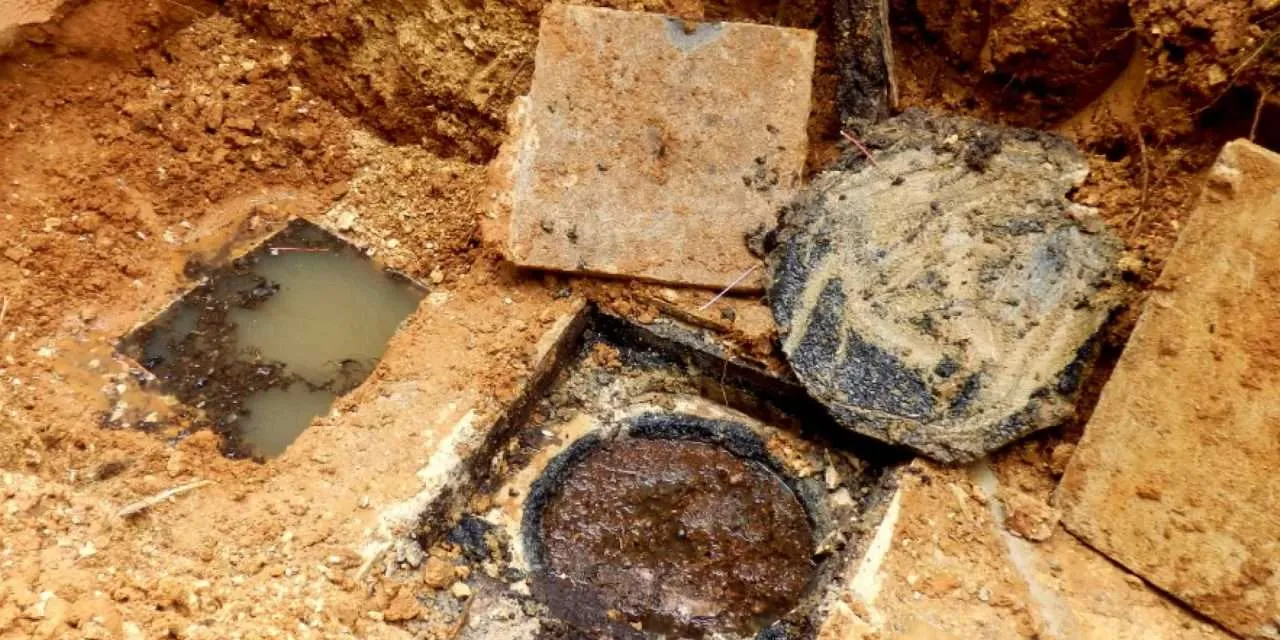Providing safe access to water and sanitation facilities is a social and demographic imperative and a key driver for gender justice. UN world Water Development Report 2021, released on 21st March 2021, with the theme of ‘Valuing Water’ noted that one of the reasons for mismanagement of water is a failure to recognize the variant value of water and lack of involvement of multiple actors in decisions related to water usage. Given that divergent stakeholder groups accord different value to water, an inclusive and holistic approach to water management is thus recommended, for policies and practices related to water governance to be developed and implemented in an equitable manner.
There is substantial evidence to indicate that lack of access to safe water and sanitation facilities disproportionately affect girls and women. First, women and girls continue to have the bulk of care responsibilities (in rural communities in particular), which includes managing the water supply and water usage, as per household needs. Second, lack of access to water facilities require young girls and women to travel long distances to access water for household needs, which precludes them from any kind of sustainable participation in education or any form of sustainable employment. Data collected across ninety (90) countries in the last decade (2001-2019) provides evidence that women spend disproportionately more time (2.5 times more hours than men) on unpaid house-work and care work, with this figure increasing post-pandemic (SGD Report, 2021). Third, as per SDG Report 2021, violence against women continues to be at unacceptably high levels, with nearly one in three women (736 million) subjected to some form of violence. As per evidence from India, lack of access to toilets at home, doubles the risk of sexual violence for women, in comparison with those who have access to toilet facilities (Jadhav et. al. 2016). Fourth, lack of access to safe water and hygiene facilities at school leads girls to quit school as soon as they reach puberty, further precluding them from vital learning experiences that are crucial for their long-term human capital development and economic and emotional emancipation.
Given this debilitating impact on women due to of lack of access to water and sanitation facilities, their involvement and voice in water resource management is a global imperative, to arrive at gender just policies and resource allocations (Sustainable Development Goals Report 2021). UN-Water 2021 reports that ‘fewer than 50 countries have laws or policies that specifically mention women’s participation for rural sanitation or water resources management’. Further a recent report from Global Water Partnership and UNEP-DHI, 2021, provides evidence that inclusion of women, in particular, as equal partners in water resource management, is in its nascent stages, with the compartmentalized and adhoc approaches, failing to impact policy and practice significantly.
It is against this background that Water for People India’s Water User Committees (WUC), is an important step in the right direction.
Water for People India: Everyone Forever Model
Water for People (WFP) India’s Everyone Forever Model (implemented in alignment with WFP global vision and mission) has inclusivity at its core. Specifically, the impact model takes a holistic and multi-stakeholder approach to strengthen the Water, Sanitation and Health (WASH) ecosystem for sustainable and scalable impact. Since beginning its operations in 1996, WFP India’s WASH solutions have positively impacted more than one million people in India, through working in collaboration with relevant partners in the public and private sectors and NGOs, among others. In particular, WFP India’s extant WASH initiatives across key blocks in West Bengal, Bihar and Maharashtra, are implemented in alignment with the Government of India’s Swachh Bharat Mission (2014) and Jal Jivan Mission (2019) mandate for a bottom-up approach to sustainable change.
Water User Committees (WUC): A community-based approach to water governance and water resource management
Structure
The WFP India WUCs are built on a community-based approach to change, with one WUC for each water point. WUCs generally comprise seven (7) to fifteen (15) members, from the specific households that use the water point. Three (3) office bearers are elected for a term by the WUC, from within the community.
Capacity Building
The WFP India project teams provide WUC members with formal and informal capacity development opportunities on a range of skills including, operation and maintenance, maintaining accounts (income and expense on various heads, handling petty cash, etc.), organizing and minuting meetings and liaising with jalabandhus and Panchayati Raj Institutions (PRIs). There is also evidence of cascading of this learning, as WUCs who are trained provide technical support to their PRIs and Village Water Sanitation Committees (VWSCs).
Specifically, WUCs perform the following key functions:
- Ensure Operation and Maintenance of the water point
- Tariff setting and collection
- Minor repairs of the water point
- Maintain cleanliness around the water points
- Liaise with the Jalabandhus for repairs of water points
- Liaise with the panchayat for resource allocations for major maintenance work (to cover the cost of labor and materials)
- Management of funds, including payment to hand-pump operators
- Scheduling and leading monthly meetings to discuss tariff collection, water supply operations and management
Women as agentic change makers
WFP India has formed eighty-three (83) WUCs since 2019 in Birbhum District of West Bengal, comprising a total of nine hundred and thirty-one (931) members. Four hundred and eighty-two (482) members out of the 931 are women (53% of the WUCs). Further, twenty-five (25) WUCs have more than sixty percent (60%) female representation and eleven (11) WUCs currently have more than 70% female representation, with some WUCs being fully comprised of, and led by, women.
The bottom-up change model as implemented through the WUCs, is built on the paradigm of opportunity creation for exercising leadership amongst women, and enabling the same through continuous capacity building, across a range of functions. Evidence from the field indicates an increased sense of ownership and commitment amongst these women, transforming them from powerless recipients to agentic designers of change, within their homes and communities.
Rebati Pahariya, a tribal woman from Kalyanpur Adivasi Para, states ‘The water point and the community meetings have motivated me. I am now confident in public speaking and have participated in para baithaks with the panchayat members’.
SK Sahanaz, a local panchayat member, from Hajratpur Panchayat, remarks ‘There has been a change among people of Kalyanpur Adivasipara’, ‘(they) have voiced their needs for the first time in last Gram Sabha. In January 2020, WFP provided a water point here and formed and trained a WUC. The motivated members of the newly formed WUC were instrumental in sharing their needs for a water connection in the Gram Sabha, which was duly acknowledged, and in October 2020 a community tap connection was provided.’
Evidence from another constituency (Khoyrasol) indicates that a total of eighteen (18) WUCs have taken action in the past six months alone, to improve water supply. Further, five WUCs in Rajnagar reported an improvement in water supply since they were constituted, with all having levied token tariffs.
The holistic impact on water resource management is also evident as per feedback from WFP India partners on the ground, who note that the WUCs meet two conditions for improved water resource management. The first is through the collection of water tariffs from the beneficiaries (local villagers of that community) to cover the cost of operation and maintenance, thereby developing a sense of ownership, as well as greater efficiency and accountability towards the assets installed in their locality. The second is an increase in the participation in decision making leading to more sustainable water usage and more equitable sharing of benefits, contributing to overall wellbeing and resilience of the communities involved, with women at the heart of this transformation.
Conclusion:
Since women are disproportionately affected by lack of access to WASH facilities their involvement in key decisions related to water resource management is necessary for achieving gender justice in water usage. WUC committees are an impactful strategy for gender mainstreaming water resource management, with long term implications for achieving both SDD#5 and SDG#6.5.1 goal. It is evident that WUC provides opportunities for agency creation, through education and skill-building, which then acts as a conduit for their engaged participation at the community level, with direct and indirect impacts on their continued empowerment. In addition, empowered women who understand the significance of WASH will accelerate behavioural change at home and in their communities, thereby creating a multiplier effect for continued achievement of gender parity across the various interrelated SDGs.
1 UN Water Report, 2021. Available url: https://www.unwater.org/publications/un-world-water-development-report-2021/. Accessed 01-06-2022
2 SDG Report, 2021. Available url: https://unstats.un.org/sdgs/report/2021/The-Sustainable-Development-Goals-Report-2021.pdf. Accessed 02-06-2022
3 Jadhav, A., Weitzman, A. & Smith-Greenaway, E. Household Sanitation facilities and women’s risk on non-partner sexual violence in India. BMC Public Health, 16, 1139. Cited in https://www.waterforpeople.org/women-and-girls/. Accessed 02-03-2022
4 SDG Report, 2021. Available url: https://unstats.un.org/sdgs/report/2021/The-Sustainable-Development-Goals-Report-2021.pdf. Accessed 02-06-2022
5 Global Water Partnership and UNEP-DHI, 2021. Advancing towards gender mainstreaming in water resources management. Available, url: https://www.gwp.org/globalassets/global/activities/act-on-sdg6/advancing-towards-gender-maintreaming-in-wrm—report.pdf, Accessed 01-03-2022.
6 Jal Jivan Mission (2019). Available at url: https://jaljeevanmission.gov.in/. Accessed 03-03-2022
7 Jalabandhus in India. Available at url: https://thewashroom.waterforpeople.org/resources/jalabandhus-in-india/ Accessed 01-03-2022
This post has been authored by Payyazhi Jayashree, Vice President of Water for People India Trust Board





